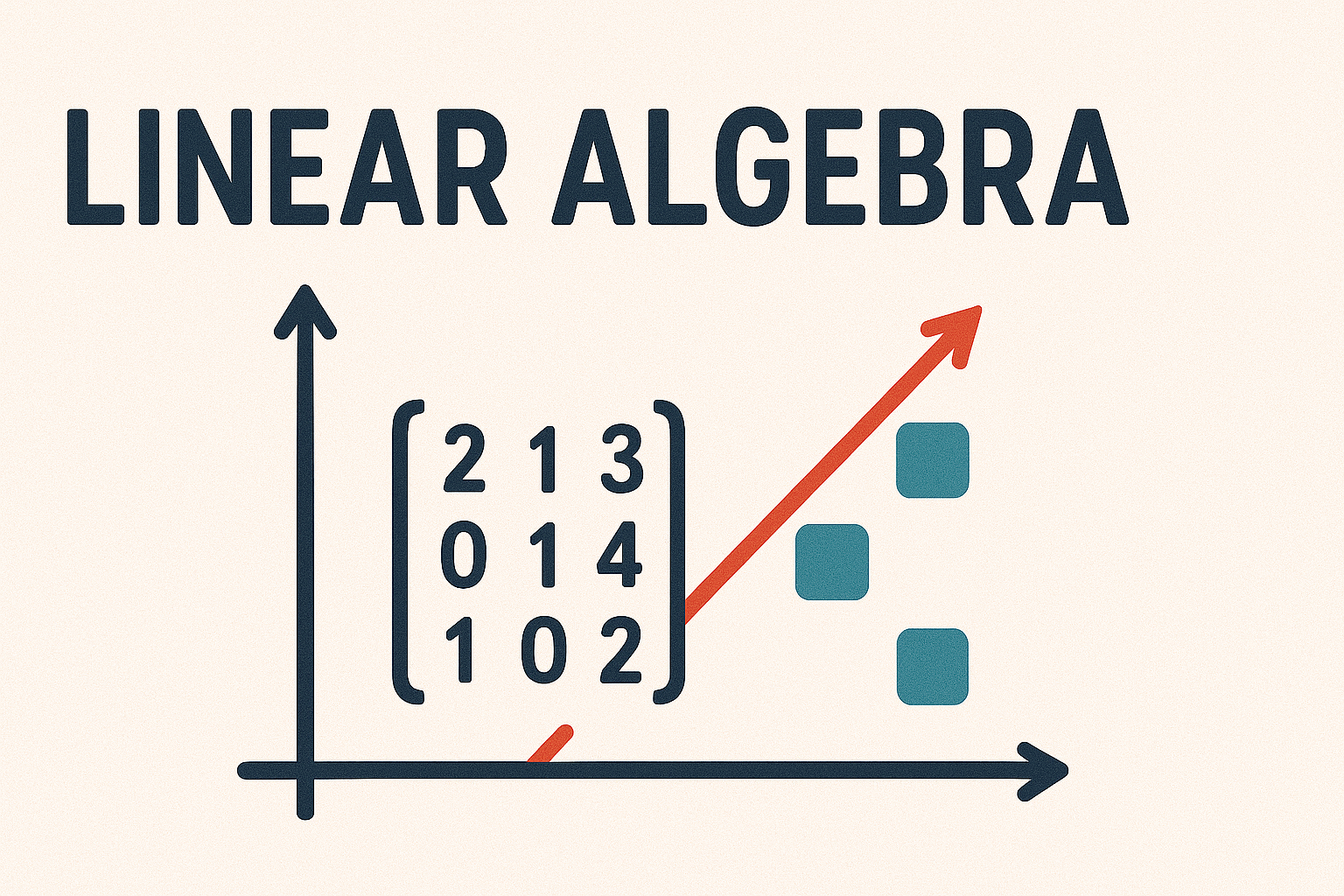6. Linear Transformations#
You will already be familiar with the use of functions in mathematics to study sets and the mapping from a set of inputs set to another set of outputs. The notation used to denote functions is of the form \(f: X \to Y\) where \(f\) is the name of the function, \(X\) is the set of inputs known as the domain and \(Y\) is a member of the set of outputs known as the co-domain. The mapping which defines the relationship between the domain and co-domain is defined using \(y = f(x)\) where \(x\) is a member of the domain and \(y\) is a member of the co-domain.
In linear algebra we study the linear mapping of a set of vectors to another set of vectors, so we define \(T: V \to W\) where \(V\) and \(W\) are vector spaces and the mapping from an input vector \(\mathbf{u} \in V\) to an output vector \(\mathbf{w} \in W\) is given by \(\mathbf{w} = T(\mathbf{u})\).
Linear transformations have lots of uses in mathematics and computing. A good example is in the field of computer graphics and computer games where they are fundamental to the manipulation and visualisation of three-dimensional objects.
We begin with the formal definition of a linear transformation.
Definition 6.1 (Linear transformation)
If \(V\) and \(W\) are two vector spaces over the same field \(F\) then by a linear transformation (or linear mapping) is a mapping \(T: V \to W\) that for any two vectors \(\mathbf{u}, \mathbf{v} \in V\) and any scalar \(\alpha \in F\) the following conditions hold
addition operation: \(T(\mathbf{u} + \mathbf{v}) = T(\mathbf{u}) + T(\mathbf{v})\);
scalar multiplication: \(T(\alpha \mathbf{u}) = \alpha T(\mathbf{u})\).
The result of applying a linear transformation to an object is known as the image.
For example, let \(V = \mathbb{R}^2\) and \(W = \mathbb{R}^3\) then \(T : V \to W\) defined by \(T : (x, y) \mapsto (x, y, 0)\) is a linear transformation. Let \(\mathbf{u} = (u_1, u_2), \mathbf{v} = (v_1, v_2) \in \mathbb{R}^2\) and \(\alpha \in \mathbb{R}\) then
so \(T(\mathbf{u} + \mathbf{v}) = T(\mathbf{u}) + T(\mathbf{v})\) and the addition condition is satisfied. Similarly
so \(T(\alpha \mathbf{u}) = \alpha T(\mathbf{u})\) and the scalar multiplication condition is satisfied and combined with the addition condition we have shown that \(T\) is a linear transformation. We can combine the addition and scalar multiplication conditions to give a single condition.
Definition 6.2 (Linear transformation condition)
A transformation \(T : V \to W\) is a linear transformation if the following condition is satisfied for any \(\mathbf{u}, \mathbf{v} \in V\) and \(\alpha \in F\)
Example 6.1
Determine which of the following transformations are linear transformations
(i) \(T: \mathbb{R}^3 \to \mathbb{R}^2\) defined by \(T: (x, y, z) \mapsto (x, y)\)
(ii) \(T: \mathbb{R}^3 \to \mathbb{R}^2\) defined by \(T: (x, y, z) \mapsto (x + 3, y)\)
(iii) \(T: P(\mathbb{R}) \to P(\mathbb{R})\) defined by \(T: p \mapsto p \dfrac{\mathrm{d}p}{\mathrm{d}x}\)
Solution
(i) Let \(\mathbf{u} = (u_1, u_2, u_3), \mathbf{v} = (v_1, v_2, v_3) \in \mathbb{R}^3\) and \(\alpha \in \mathbb{R}\) then
Since \(T(\mathbf{u} + \alpha \mathbf{v}) = T(\mathbf{u}) + \alpha T(\mathbf{v})\) then \(T: (x, y, z) \mapsto (x, y)\) is a linear transformation.
(ii) Let \(\mathbf{u} = (u_1, u_2, u_3), \mathbf{v} = (v_1, v_2, v_3) \in \mathbb{R}^3\) and \(\alpha \in \mathbb{R}\) then
Since \(T(\mathbf{u} + \alpha \mathbf{v}) \neq T(\mathbf{u}) + \alpha T(\mathbf{v})\) then \(T: (x, y, z) \mapsto (x + 3, y)\) is not a linear transformation.
Note that we could have shown this by a counterexample, e.g., let \(\mathbf{u} = ( 1, 0 , 0 ), \mathbf{v} = (2, 0, 0) \in \mathbb{R}^3\) then
(iii) Let \(u = x \in P(\mathbb{R})\) then
therefore \(T(2u) \neq 2T(u)\) and \(T: p \mapsto p \dfrac{\mathrm{d}p}{\mathrm{d}x}\) is not a linear transformation.
